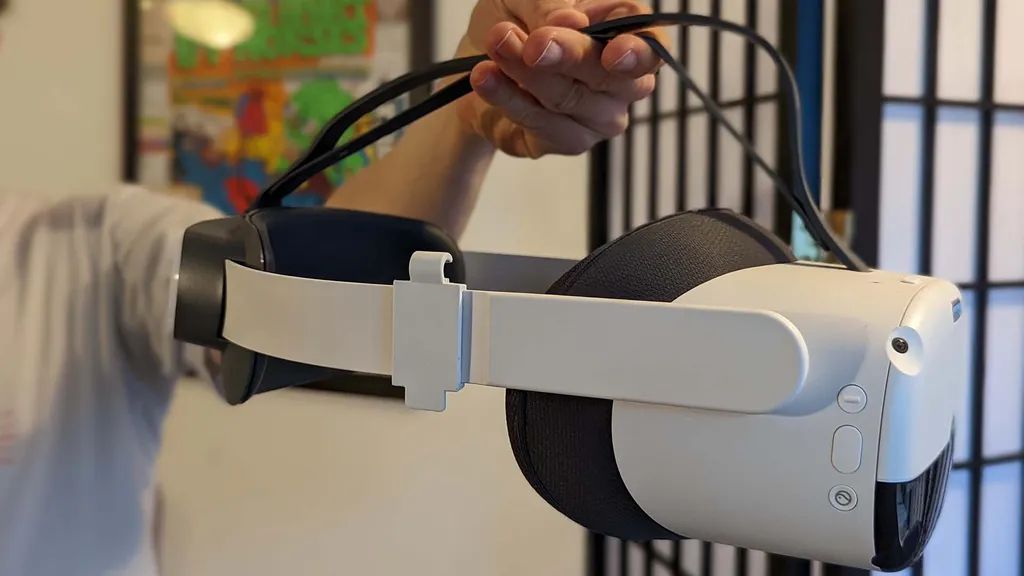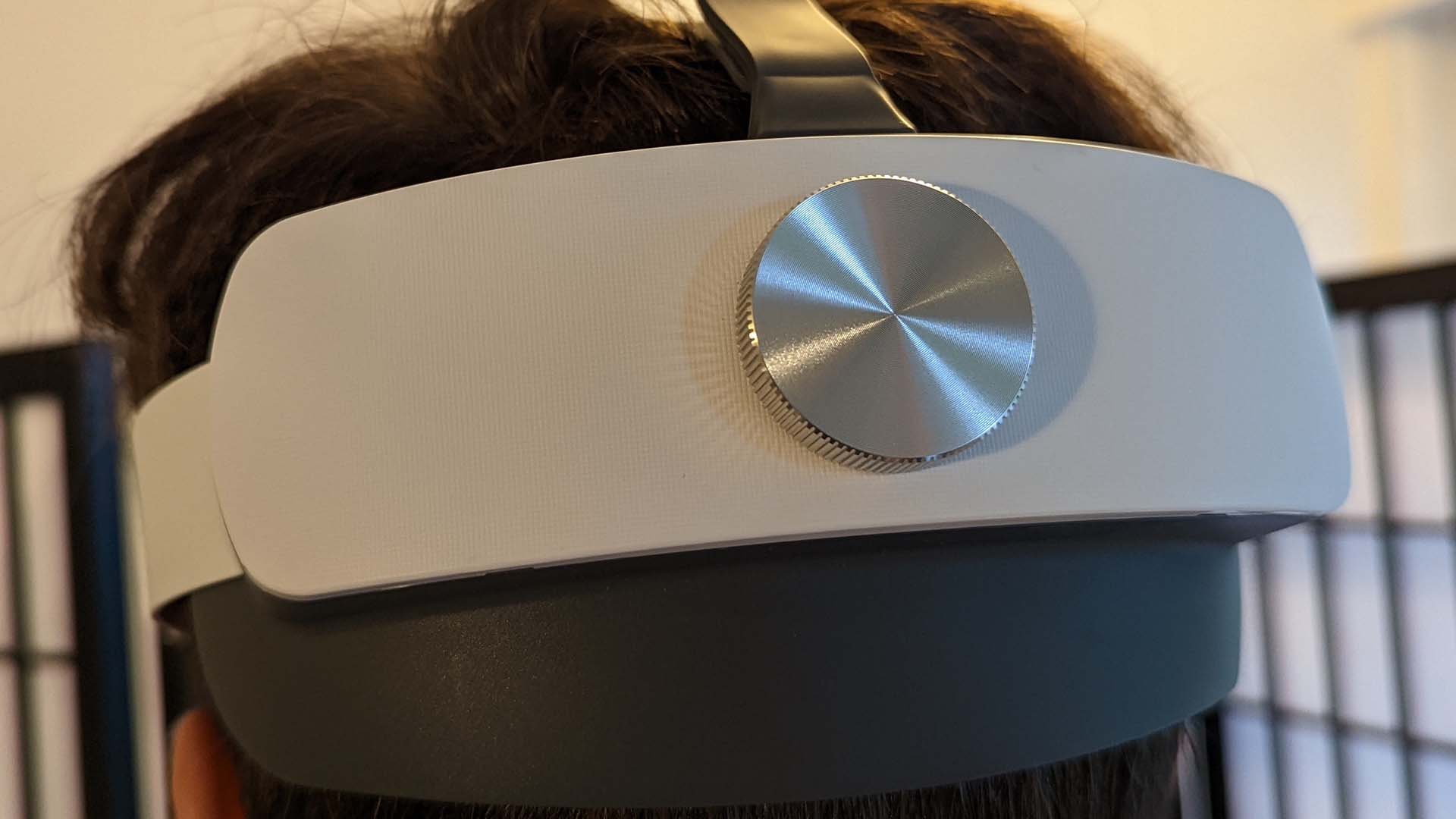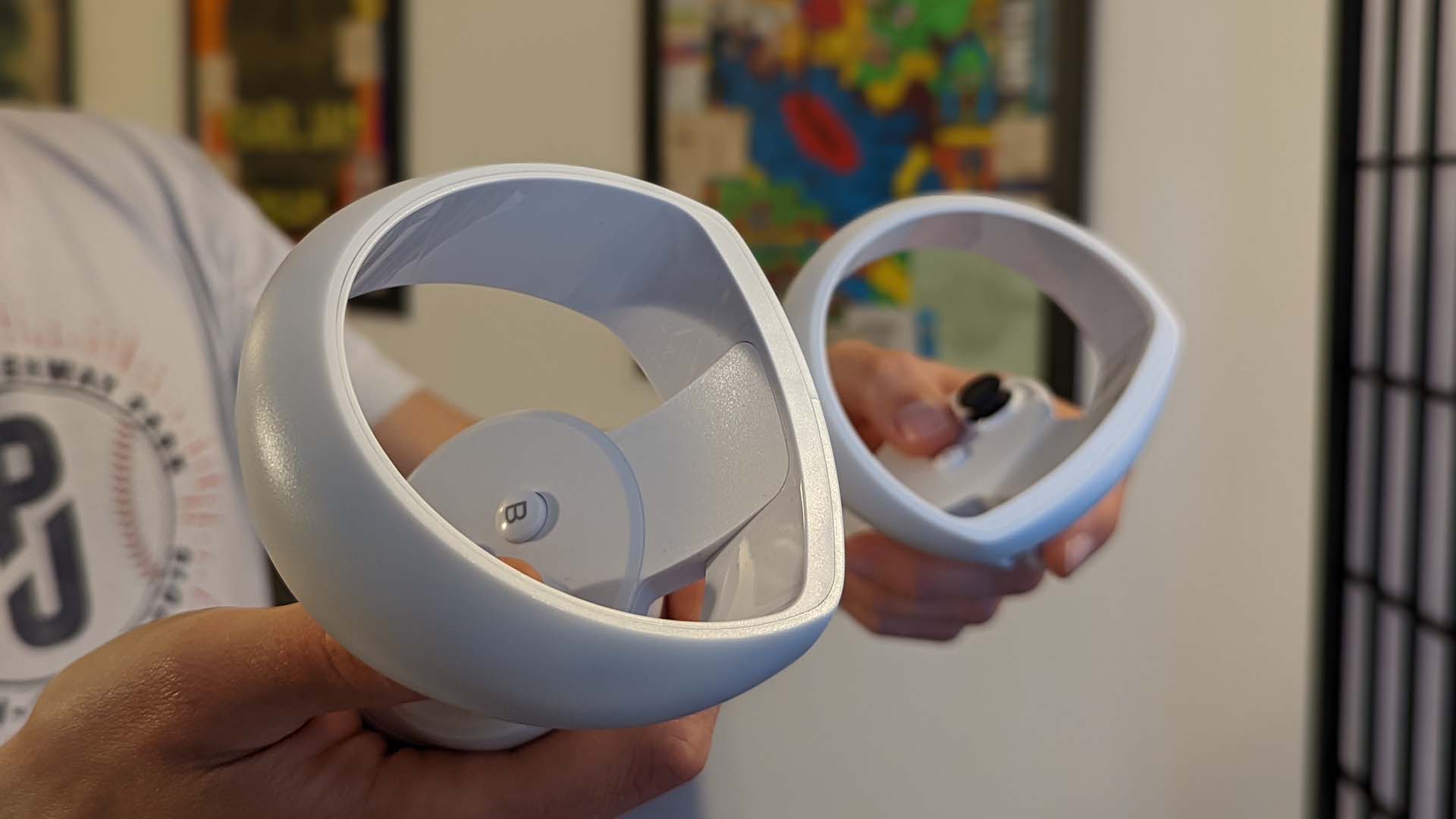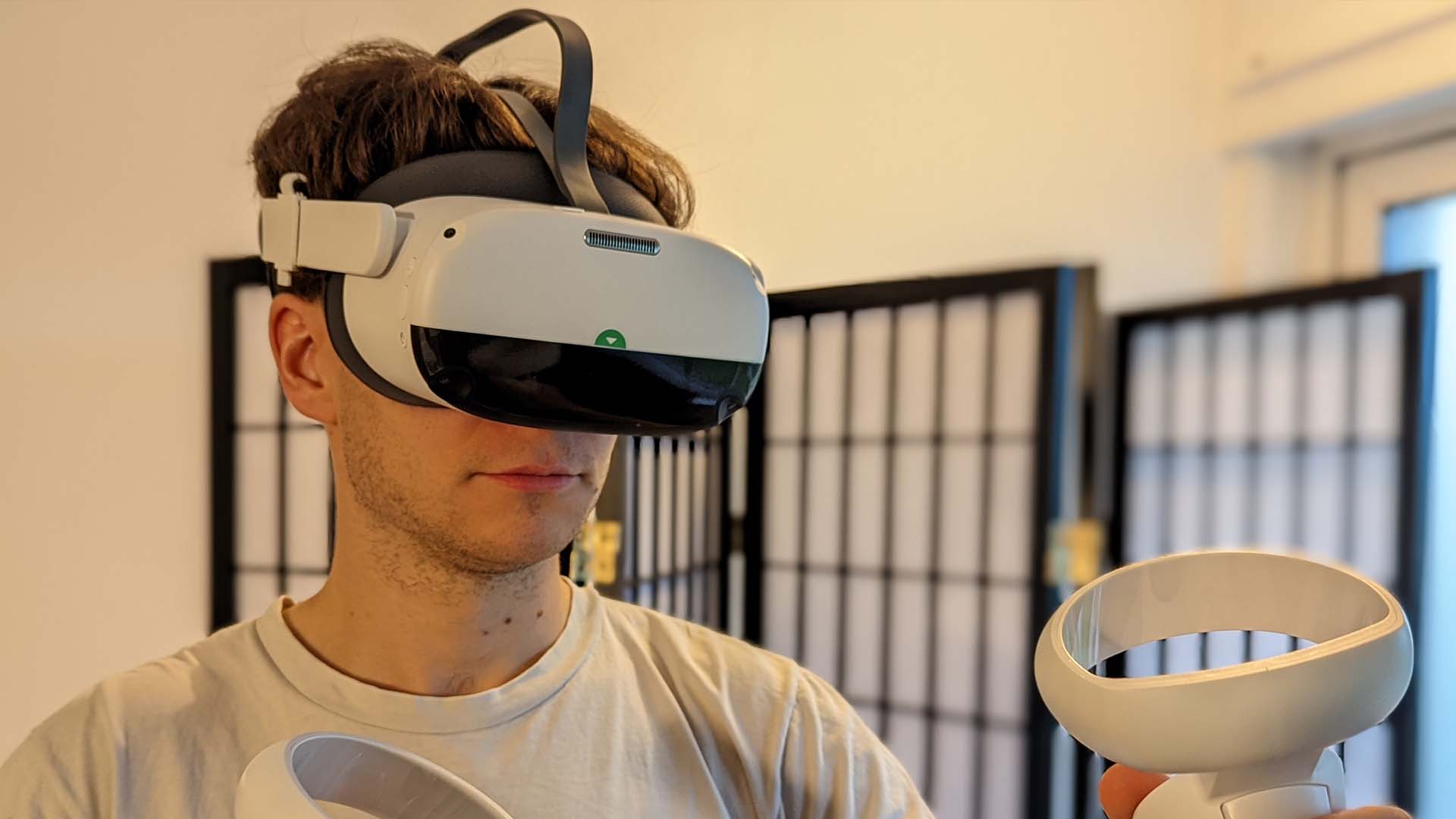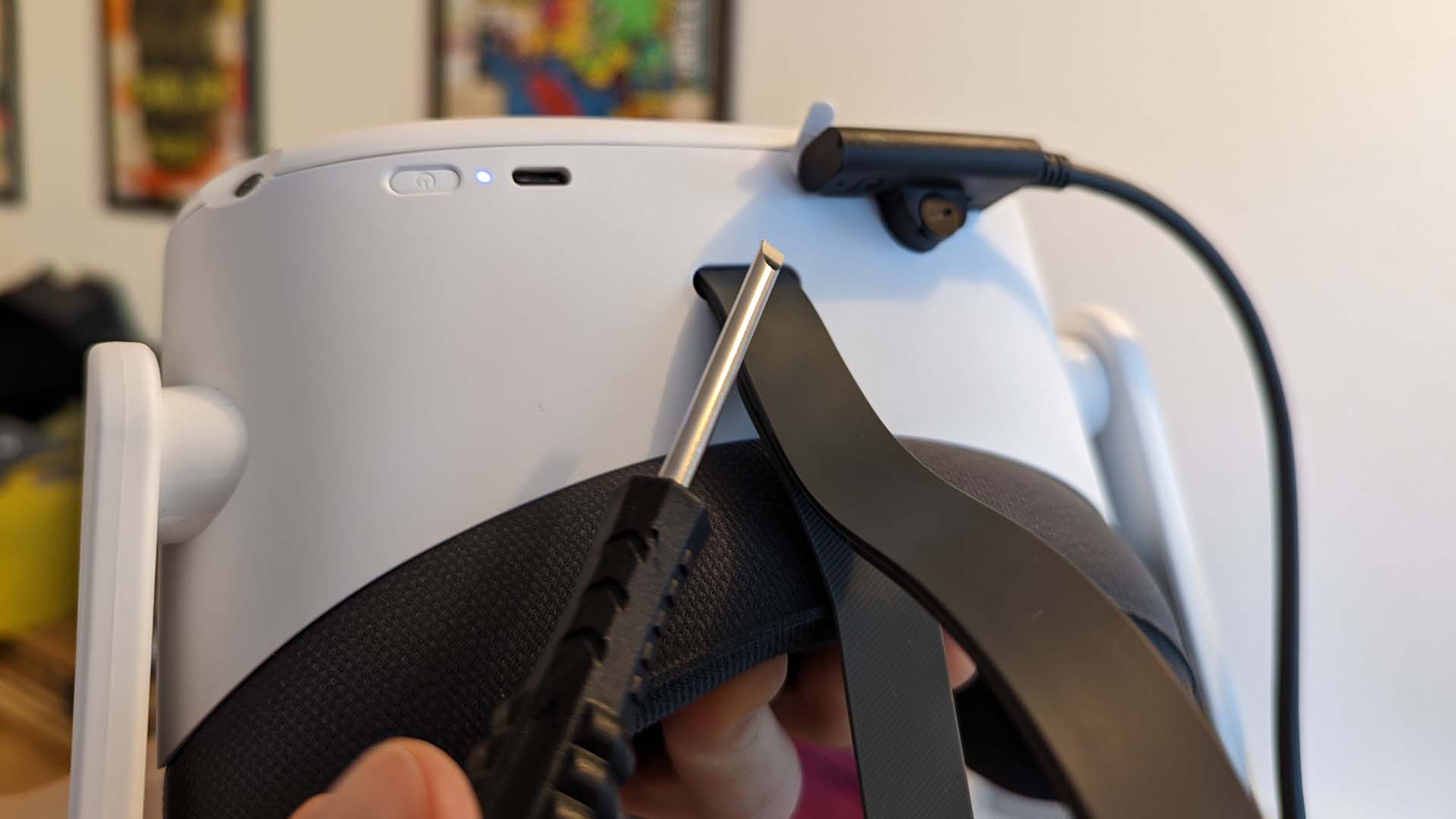Pico’s first consumer headset to release in the west is still a work in progress, but it suggests Meta has some serious competition in its future. Read on for our Pico Neo 3 Link review.
Note: Please keep in mind that the Pico Neo 3 Link is described as a beta product and is still getting software updates with new features and fixes. What’s written below was accurate at the time of publication, but may soon change.
I’ll just come right out and say it: unless you’re a diehard VR enthusiast desperately in search of a standalone VR headset not owned by Meta, you probably shouldn’t buy a Pico Neo 3 Link. This isn’t because the headset itself is necessarily bad — it’s actually a very decent device that’s comparable to Quest 2 in many areas including price at €450 — but simply because the Neo 3 Link is still a work in progress, and may have less than a year of shelf life before it’s replaced.
Newly acquired by TikTok owner ByteDance, Pico has dropped some big hints that its next-generation VR standalone is around 12 months out. In fact, anyone that does buy the Neo 3 Link will get a discount on that hypothetical new device when it releases. Make no mistake then, the Neo 3 Link is very much a beta product in search of guinea pigs. This limited release is intended to both test the waters of the consumer VR market and help prove out the company’s software and hardware offerings as it plots new devices and expansions to the US.
That said, as we’ll discuss later, the Neo Link 3 does actually have some big advantages over Quest 2 if you’re looking to also use the device with a PC.
Design, Comfort & Specs
Whichever angle you look at it from, the Neo 3 Link looks a lot like a Quest 2. Literally, yes, it’s a similar design with four cameras for tracking and a bulky front visor that stores all of the headset’s compute. Charging’s done via USB-C and Pico even borrows Quest 2’s three-point lens adjustment covering a range of eye distances by reaching inside and moving them.
One nice advantage that the Neo 3 Link does have over Quest 2 is that it basically comes with the Elite Strap already integrated into the device. There’s a back dial that allows you to quickly adjust your fit and provides a little better weight distribution than the Quest 2 with its basic headstrap, even if it overall makes it the heavier of the two headsets. Combined with the soft fabric lining and stretchy rubber top strap, the headset’s pretty comfortable to wear for long stretches of time without getting much fatigue on your face and head.
Even on the inside, though, things are mostly identical to Quest 2: the Neo 3 Link runs on Qualcomm’s XR2 chipset and offers the same 1832×1920 per-eye resolution. There’s also a limited 120Hz mode for some less demanding games, but most content will run at 90Hz. In other words, the games and apps the Neo 3 Link 3 can run are exactly the same as those you see on Quest 2; don’t expect any significant leaps in graphical fidelity and performance.
Two speakers located in the headset’s side straps provide serviceable audio, with a headphone jack for those that want it and easily-reachable volume buttons.
Perhaps the most distinctive feature of the Neo 3 Link is the second USB-C port it has, hidden underneath a rubber cap. This is essential for the headset’s PC VR offerings, but we’ll get to those in a bit.
Controllers & Tracking
Again, if you’ve held a Quest 2 controller you’ll know what to expect from the Neo 3 Link’s two motion controllers. They’re the tried-and-true mix of a single trigger, side grip button, two face buttons with an analog stick each. The tracking ring runs on top and, interestingly, both controllers have a Home and Menu button each, which is a nice inclusion for anyone that ever forgets which is which on the left and right Touch controllers.
The controllers are certainly light and fit comfortably in your hand, though they don’t have quite the same premium feel as the Quest 2 controllers and they also both run on a pair of AA batteries each.
When it comes to the actual tracking itself I’ve been pretty pleased with the accuracy and consistency in well over 15 hours of playtime.
The Standalone Experience
As far as the content library goes, the Neo 3 Link currently does a decent job of bringing Quest 2’s best third-party games to a new ecosystem, where they look and play practically identical. That includes all-timer releases like Superhot VR and Eleven: Table Tennis as well as recent hits like Demeo and After The Fall, with some notable omissions like Job Simulator. I’d expect the list of missing games to narrow by the week as more titles launch on the device, though (you can keep up with a list of all Neo 3 Link support games here).
The Neo 3 Link also isn’t as strictly curated as the Quest store, which means you get front-and-center access to some great indie titles like Crisis VRigade 1 and 2, as well as some not so great titles you’ll scroll right on past. With that said, you’re still essentially getting a pared back version of the Quest 2 line-up with the Neo 3 Link, without any of the big exclusives like Beat Saber, Echo VR and Resident Evil 4 VR.
Pico is really going to have to double down on investment to make this library much more compelling; it’ll need not just parity with third-party Quest releases but some hits to call its own and help differentiate it from the Quest ecosystem. I’ll be very interested to see how it goes about achieving this in the months to come.
You’re also missing a wealth of features Meta has implemented into Quest 2 over its 18 or so months on the market. That includes hugely important input options like hand-tracking. The Neo 3 only supports this with the enterprise-level Pro model and that’s only with an externally-mounted Ultraleap sensor. Plus there’s an an ever-increasing suite of social and productivity enhancements like sensing when someone has stepped into your play space or inviting others into your home environment. The list goes on: marking out virtual desks and couches, multitasking on 2D windows, tracked bluetooth keyboard recognition and more. There’s a lot to catch up on here.
This is, crucially, where the word ‘beta’ really comes into play. Pico is essentially only just starting out on the same journey Meta began with the release of the first Quest, and we’d expect many of these features to eventually find their way into the Neo series. The big question is if the Neo 3 Link will continue to be supported with those new features once its successor arrives because, if not, it’s even harder to recommend the device to more casual VR users.
PC Integration
But, while the Neo 3 Link might be missing a lot of the features you can currently enjoy on a Quest 2, it also boasts one big feature Meta doesn’t have. Packed inside every box alongside the headset is a USB-C to DisplayPort cable. You can use this to connect directly to your PC and experience clean, uncompressed PC VR. Meta’s USB-C to USB-A Link, meanwhile, offers a stable connection but compresses the image, and it’s very noticable. Pico also features an AirLink option for wire-free streaming, but it adds that compression back in.
I’ve been using the wired connection to try out demos from Steam Next Fest, and as I’ve reviewed Green Hell VR’s PC version, I found the clarity on offer with the wired connection easily makes the Neo 3 Link my prefered hybrid headset. Until now, I’d kept a Rift S handy at all times because it offered the right mix of ease of use and clarity. The Neo 3 Link will allow me to finally shelve that headset.
That said there are some issues to iron out. For starters, the Neo 3 Link humorously comes with its own screwdriver to secure the USB-C connection to your headset without risk of detachment. It certainly works, but it’s not exactly practical to keep a screwdriver around at all times as you go between modes.
The actual SteamVR integration, meanwhile, has worked well for me in terms of performance and controller compatibility though I have seen some strange issues. For example, the virtual controllers shown in SteamVR have always resembled the Oculus Rift CV1 Touch controllers, and not Pico’s designs. I recieved an update earlier this week that said that issue was fixed but, even after that update, it’s still there. Button prompts to exit streaming also don’t really seem to work. Hopefully Pico can work with Steam to further improve implementation in future updates and products.
Privacy
Presumably many people would be interested in the Pico Neo 3 Link as an alternative to the Quest 2 because it isn’t associated with Meta. You don’t need a Facebook account to setup the device (though Meta still says it will be removing this requirement for Quest in the future) and you won’t lose access to games and apps if that account is banned for any reason.
But, just because you don’t need a social media account, doesn’t mean the Neo 3 Link doesn’t raise privacy concerns. TikTok itself has been at the center of this debate for some time, though the company has always claimed that US users’ data does not leave the country, save for “backup redundancy in Singapore.” But this hasn’t silenced concerns; just last week a Buzzfeed News report claimed ByteDance employees had access to “nonpublic data about US TikTok users”.
In my 2020 Quest 2 review I said that “the ball’s kind of in your court” when it comes to deciding how much of an issue these concerns are for you. “You don’t need me to tell you that Facebook doesn’t have a great reputation on data privacy. You can see the obvious benefits the company might see in a technology platform that could literally tell where you’re looking at all times, then.”
You should consider this statement relevant to ByteDance, too.
Pico Neo 3 Link Review: Final Impressions
The Pico Neo 3 Link marks a decent start for ByteDance’s consumer VR ambitions with a headset that’s comparable to the Quest 2 in a lot of important ways — some even favorably — even if this beta release is missing some vital features and software. Crucially, being able to offer the headset for €450 with a DisplayPort cable included suggests that Meta’s iron grip on VR value might be about to get some serious, much-needed competition.
But it’s hard to recommend the Neo 3 Link to many VR fans simply because the device is so obviously testing the waters for what comes next. With a Neo 4 looking increasingly likely in the near future, the Neo 3 Link’s purpose is mainly to prove out features for what comes next. A discount on the Neo 3 Link’s successor isn’t much of an incentive to dive in now when you could simply save a lot more money by waiting 12 months for that next device. Still, if you’re strictly looking to buy a headset now that offers a compression-free PC VR experience and a taste of standalone as well, the Pico Neo Link 3 is a decent Quest 2 alternative.

